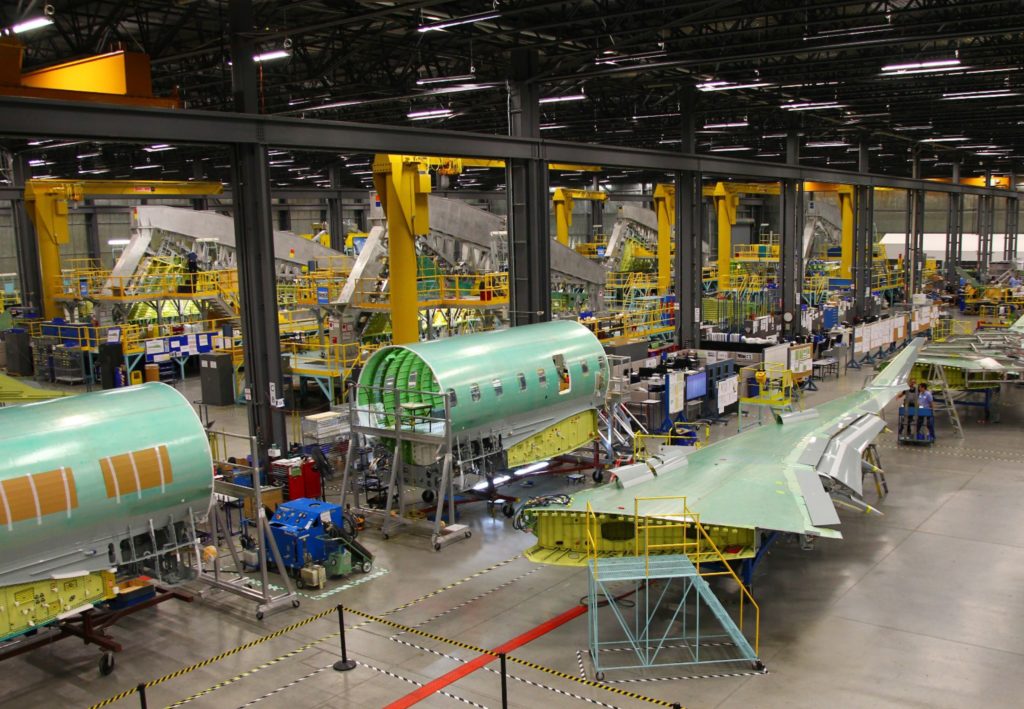Estimated reading time 11 minutes, 38 seconds.
Whether he looks ahead or behind, Jim Quick can see the squeeze coming.
Ahead, countries with well-established aerospace industries are developing long-term strategies to strengthen their positions and capitalize on new technologies. Behind, emerging markets are aggressively pursuing entry into the sector, expanding aircraft production and staking a claim to the lucrative maintenance, repair and overhaul business.

“The global aerospace industry is growing and evolving at an unprecedented rate,” said Quick, the president and chief executive officer of the Aerospace Industries Association of Canada (AIAC). “New markets are opening up everywhere. New technologies are disrupting our industry [and] shaping a global landscape.”
More and more countries in Asia and Africa can see a potential future in the aerospace sector and are investing, in some cases heavily.
“There are emerging economies that feel that having aerospace is a key economic driver critical to their economical and industrial success,” he observed.
Canada may be ranked fifth among global aerospace markets, and a leader in aircraft-related productivity and research and development, but it’s a position that could quickly wane if industry and government lack a long-term plan to guide investments. Look no further than space, where Canada’s investment as a percentage of GDP has slipped noticeably from 8th place in 1992 to 18th today.
“We have a strong industrial base. We are some of the greatest R&D contributors globally from an aerospace perspective. All the fundamentals are there and our companies have worked hard to put those fundamentals in place,” said Quick. “We have an opportunity to leverage that competitive advantage to grow and innovate. [But] if we don’t do that, I think we are at risk of following behind.”
AIAC in October launched Vision 2025: Beyond Our Imagination, an industry-led initiative intended to spark a conversation among industry, government, the public, and other stakeholders that will lead to recommendations to shore up Canada’s future in the aerospace sector.
The initiative is being led by Jean Charest, a former federal cabinet minister and provincial premier, and currently a partner with McCarthy Tétrault in Montreal.
Charest served as premier of Quebec between 2003 and 2012, a period following the downsizing of the 1990s when responsibility for many programs shifted from federal jurisdiction to the provinces. Investment in aerospace was one such area and Charest steered several strategic bets in the sector, including support for Bombardier.
“I believe in this industry. I certainly have a pretty good understanding of how important the role of government is in this. Whether it is R&D or procurement, this is an area where governments have a pretty key role to play,” he said.
“What I also remember from that experience is that we never lost money. Whether it was through the Export Development Canada or other ventures, the governments of Canada never lost money in the industry,” he added. “It has created thousands of good paying jobs [and] it has been part of the branding of the country. When you look back, it is unusual to have a country of 36 million people for this type of industry. The only way for us to support it is to be able to sell abroad. We are exceptional in that way because we built this industry without having an internal market.”

Over the next four months, Charest will be conducting a series of meetings and roundtables across Canada, beginning with the Canadian Aerospace Summit in Ottawa Nov. 13 to 14, to engage industry, government and other stakeholders, including the public, in a discussion about the future of the sector. The roadshow will include stops in Toronto and Montreal in December, and in Vancouver, Winnipeg and Halifax in January.
The intent is to gather the key elements industry is looking for and make the case to government about the importance of the sector to the country. Charest has already meet with Navdeep Bains, Minister of Innovation, Science and Economic Development, and said the government will be following the process closely. “I want to get the provincial governments involved. They have a big stake in this,” he added.
The roundtables are also an effort to connect Canadians to the legacy of aerospace and secure broader support for more investment.
“We want to bring something constructive to the government,” said Charest of the final report, which is expected in late February or early March, in part to coincide with the budget debates and the looming 2019 election campaign. “Hopefully, the government and the political parties will take up some of the ideas that will come from our report.”
That not only includes a discussion about the impact of emerging technologies such as artificial intelligence (AI), quantum computing, additive manufacturing, big data and greater analytics, but also assurances from government and educators that the people and skillsets will be there to capitalize.
“The employees we have today may not be the employees we have in the future,” said Quick. “The World Economic Forum is telling us that over 40 per cent of the people that work in aerospace may not be working in aerospace in 10 to 12 years’ time. And 70 per cent of those in the industry will have a different job in the industry. The disruption of some of the technologies is really going to transform how we are doing business.”
Charest suggested the federal government’s February announcement of a$950 million investment in five innovation superclusters was “a moment of truth for the industry.” Several aerospace companies, with AIAC support, had banded together to propose a supercluster.
“It was a realization that if we really want to take hold of these new technologies, then we have to get better organized and make a stronger case to the government [about] what role they need to play in order for us to take advantage of things like AI,” he said.
The aerospace sector last went through a similar exercise in 2012 when David Emerson, a former federal minister of Industry and of International Trade, led a program and policy review of aerospace and space. The aerospace report, titled Beyond the Horizon, painted a picture of a sector at a critical juncture.
“If the sector is to continue to thrive and to benefit the country as a whole, all players–companies, academic and research institutions, unions, and governments–must understand and adapt to changing realities. Success depends on developing the technologies of tomorrow and securing sales in a highly competitive global arena,” Emerson wrote at the time.
“Private aerospace companies will ultimately drive competitive leadership in the new global economy. But thoughtful, focused, and well-implemented public policies and programs can play a critical role in facilitating this success, by encouraging aerospace innovations involving enormous financial risk and long timelines; improving industry’s access to global markets and supply chains; leveraging government procurements to support industrial development; and helping to build a skilled, adaptable workforce.”

The space industry report, Reaching Higher: Canada’s Interests and Future in Space, was even more stark, arguing that “business as usual will not be good enough.” To foster a competitive Canadian space industry “will require resolve, clear priorities that are set at the highest levels, and effective plans and programs to translate these priorities into practice,” stated Emerson.
Both Quick and Charest believe the findings are still relevant and the sector needs a long-term vision.
“That is the sense in the industry and it’s enhanced by the story of the C Series, which has arrived at the end of its development,” noted Charest. “The engineers, for example, who have worked on that project are going to be looking for work. And if we are not able to give them new projects to work on, they are going to go elsewhere. That speaks to where we are right now in the industry.”
“I think we are at a crossroads,” added Quick. “Space is a good example. While our competitors are growing and commercializing their space sector, we’re actually falling behind. We have some space companies in Canada that are moving capacity and capability to other countries because they have long-term space programs that have been costed and that have a multi-year vision.”
Though the initiative is titled Vision 2025, the intent is to begin acting on the recommendations as soon as possible, said Quick. “2025 is significant only because we feel there’s going to be a pivot in our industry from a civil aviation perspective.”
The subtitle, Beyond Our Imagination, was added in the hope of encouraging thinking “outside the box,” he said.
“Our goal is to ensure … we have a long-term strategy for the future, and we have policies that help us compete in a very fierce, competitive global environment,” he concluded.









This is an old topic. How to sustain our Canadian aerospace manufacturing industries has been discussed by industry and politicians for over 20 years and yet every year we fall further behind. As an executive recruiter to the Canadian aerospace industry I have seen our frustrated Canadian aerospace manufacturers fall to acquisitions by US and offshore aerospace companies. Very few remain Canadian owned and controlled. These foreign owned manufacturers are subject to relocation to cheap labor, less unionised environments. Our governments remain clueless in attempting to generate a Canadian growth oriented aerospace manufacturing investment environment. Even groups like OAC support moving our aero manufacturing to lower labor cost centers like Mexico. We are not competitive.Most of our aerospace programs are offset programs.